01/22/2025 - Articles
Hybrid project management: with traditional and agile methods to more effectiveness and efficiency
Classic or agile? If you find it difficult to decide between these two approaches, a combination of classic and agile project management methods is probably the right way forward. Hybrid project management is the approach that seeks to combine the best of both worlds. In this article, you will learn how the hybrid approach works, when it is suitable, what advantages and disadvantages the approach has for organizations, and how you too can benefit from hybrid project management.
- What is hybrid project management?
- Why use hybrid project management?
- Conventional project management methods: strengths and limitations
- Agile methods in project management: flexible implementation
- Strengths and weaknesses of traditional and agile PM
- Hybrid project management: combining methods to create synergies
- When is hybrid project management useful?
- Hybrid project planning: how should you proceed?
- Hybrid project management in use: example of implementation projects
- Hybrid project management: advantages and disadvantages at a glance
- Role allocation in hybrid project management: the best approaches from both worlds
- What hybrid project managers need to bear in mind
- Projektron BCS: The ideal software for hybrid project management
- Conclusion: All on hybrid?
What is hybrid project management?
Hybrid project management relies on a clever combination of at least two classic and/or agile project management methods to successfully implement a project. Project managers bring together complete management systems such as PMI and Scrum or PRINCE2 and Kanban – or select specific individual elements from different approaches.
Hybrid project management is not a fixed method with rigid rules, but rather a flexible approach that can be customized according to project requirements. Just like agile or classic project management, it offers the freedom to use the appropriate methods to achieve the best possible results.

Definition of hybrid project management
Hybrid project management combines the precise planning of traditional project management with the flexibility and adaptability of agile approaches. It combines various methods and elements from both worlds to develop a customized approach to managing projects. The term “hybrid project management” was introduced in 2017 by Holger Timinger in his book “Modern Project Management: Using Traditional, Agile, and Hybrid Approaches to Success” and describes project management methods that are specifically and individually adapted to the specific requirements of a project.
The term “integrated project management” is often incorrectly used as a synonym for hybrid project management. In fact, however, it is something completely different – namely, how the project work is integrated into the company structure. The team members only work on the project to a limited extent, while their main focus remains on their regular line tasks. The project is therefore integrated into the normal working day. However, this has nothing to do with the combination of different project management methods that is the case with hybrid project management.
Why does hybrid project management exist?
Which project management approach suits you better – traditional or agile? To answer this question for your projects, it is worth taking a closer look.
Hybrid project management offers a solution to the challenges of traditional project management, in particular its rigid structures and limited flexibility. The traditional approach often reaches its limits when it comes to adapting to changing requirements and dynamic project conditions. While the classic project approach prescribes clearly defined phases and processes that are difficult to adapt to spontaneous changes, the hybrid approach enables a flexible and adaptive approach. This flexibility ensures that the project team is able to react quickly to new challenges or customer requests, thus continuously improving project implementation. The hybrid approach also increases stakeholder satisfaction by providing the opportunity to respond to changes efficiently without having to question the entire project plan.
Another important factor in the growing importance of hybrid project management is the current developments in the world of work, such as the increasing relocation of work processes to virtual teams and the introduction of remote work. These changes have presented traditional project management with new challenges, as effective communication and collaboration without a physical presence becomes more difficult. Especially in projects that rely on remote teams, it is crucial to choose a project management method that enables efficient coordination and control even when teams are physically separated. The hybrid approach is a tailored solution because it offers project managers the flexibility to combine both agile and classic methods, thus promoting seamless collaboration across geographical and organizational boundaries.
The hybrid model is particularly advantageous because it takes into account the needs of both traditional and modern, agile ways of working. In every project, there are three key factors referred to as the “magic triangle” of project management:
- time
- costs
- scope
In classical project management, the scope is usually defined in detail at the beginning, while time and costs can be adjusted within certain limits. In contrast, in agile project management, the scope remains flexible while time and costs are binding. Hybrid project management combines these two perspectives, creating the possibility to control time, costs and scope with maximum flexibility.
Hybrid project management is the answer to the question of which approach best suits a particular project or company. It allows for a customized selection and application of methods depending on the specific requirements of the project. Whether in the company organization or within a single project – the hybrid approach makes it possible to seamlessly combine classic and agile and thus use the strengths of both approaches. The boundaries between these methods are often fluid, which makes the hybrid approach particularly adaptable and future-proof. Especially in an age in which remote work and flexible working models are becoming increasingly important, the hybrid approach proves to be the ideal solution for meeting the challenges of modern project work.
Classic project management methods: strengths and limitations
Classic methods have their place in project management, even if they are considered less flexible these days due to their rigid structure. Their strength lies in the high level of planning security and the clear definition of objectives, which is particularly advantageous in projects with clear requirements. The motto here is: Safety First!
4 classic methods:
- Waterfall model: A linear planning model divided into successive phases. Each phase has fixed start and end dates and is based on clearly defined tasks and results.
- PRINCE2: This method divides large projects into smaller, more manageable phases and places a great deal of emphasis on structure, capacity planning and cost estimates.
- V model: An advanced version of the waterfall model in which test phases are added to the phases in order to ensure quality in the early phases.
- Spiral model: A cyclical variant of the waterfall model in which phases are repeated over and over again to minimize risks at an early stage and to eliminate errors.
Agile methods in project management: flexibility in implementation
Agile methods are particularly advantageous in areas where traditional methods reach their limits – especially in flexible and rapidly changing environments. They enable rapid adaptation to new requirements and increase the team's responsiveness.
4 agile methods:
- Scrum: an agile framework that divides the project time into short stages (sprints). After each sprint, a functional intermediate product is created that is further developed based on feedback.
- Design thinking: a creative process in which interdisciplinary teams jointly develop solutions that are continuously optimized based on testing and feedback.
- Lean: The goal of this model is maximum efficiency – all resources are used in a targeted manner to avoid unnecessary waste and optimally meet customer needs.
- Kanban: A method for visualizing work processes. It enables flexible adaptation of work tasks in a board format that clearly displays the progress of the project.
Strengths and weaknesses of traditional and agile PM
Both traditional and agile project management methods have their strengths and weaknesses – and both can lead to success. Agile project management creates the ideal framework for team members to develop in the best possible way. Traditional project management, on the other hand, focuses more on the needs of management and makes it possible to clearly define project goals.
Hybrid project management aims to combine the advantages of both approaches and reduce the weaknesses.
Traditional PM | Agile PM | |
|---|---|---|
Strengths |
|
|
Weaknesses |
|
|
Hybrid project management: combining creates synergies
Hybrid project management combines classic and agile methods to adapt projects flexibly and efficiently to individual requirements. Companies do not have to choose a single approach, but can combine the strengths of both worlds to create customized solutions. This hybrid approach has proven particularly beneficial in process management, as it combines structured planning with agile adaptability.
Combining proven methods
The most successful hybrid approaches include:
- Waterfall model and Scrum: Rough planning is done using the classic waterfall model, while Scrum makes the implementation more agile. Iterative sprints continuously drive the project forward and flexibly adapt it to feedback.
- Scrumban: This combination of Scrum and Kanban uses the Kanban board to visualize the workflow and combines it with the agile structure of Scrum. This not only improves team communication and accountability, but also increases overall efficiency.
- Scrum and V-model: Here, Scrum is used initially to promote flexibility and creativity. The V-model then ensures quality and planning security with its structured approach.
Combinations like these allow methods such as Scrum, PRINCE2 and Kanban to be combined in a targeted way. While Scrum impresses with its iterative development and rapid adaptability, PRINCE2 offers clear roles and defined processes. Kanban provides a visual representation of the workflow and helps to identify bottlenecks at an early stage.
Hybrid project management strikes a balance between plannability and adaptability. Companies benefit from clear responsibilities, structured phases and the ability to respond flexibly to changes. The teams use their strengths in a targeted manner:
- Scrum: enables rapid response to customer requirements and continuous improvement.
- PRINCE2: ensures a stable base with defined processes and clear roles.
- Kanban: optimizes workflow and increases transparency.
The hybrid approach not only improves collaboration and communication within the team, but also the quality of the project results. Projects can be efficiently managed by combining agile methods at the operational level and classic approaches at the strategic and decision-making level. This way, plannable project goals and costs can be combined with the flexibility needed to adapt to new conditions.
When does hybrid project management make sense?
In general, there are various ways to use hybrid project management:
- Depending on the company division: Software development often operates in an agile way (sprint for sprint in Scrum), while all other company divisions work in a traditional way.
- Depending on the project: While it makes sense to manage a construction project in a traditional way, a software launch is better managed in an agile way.
- Within a project, by subproject: while an introductory project is managed traditionally overall, the subproject of implementation follows agile principles.
- The rough planning of a project is done traditionally, while the detailed planning uses agile methods.
This diagram can illustrate when which approach is more suitable. It clarifies the following:
- If the requirements are clearly defined and the approach to a solution is obvious, traditional project management methods are to be preferred.
- However, the less clear and precise the requirements and/or approaches to solutions are, the more suitable agile methods are.
- If the requirement is known but the solution is still unclear, this also argues in favor of a more agile approach.
| As a rough guide, the less clear the requirements and the more uncertain the approach and method of resolution, the more suitable the agile method is. |
However, the prerequisites and requirements of a real project will rarely be so clear and unambiguous that only one approach or a specific mix of methods would be prescribed. Ultimately, however, classic and agile methods can lead to success in almost all cases. The decision for one or the other method always depends on the framework conditions and the goal of the respective project.
How should you proceed with hybrid project planning?
The starting point for selecting suitable methods for hybrid project management is always the project itself. The following questions need to be answered in advance:
- What are the goals of the project?
- What are the framework conditions?
- Which subprojects and tasks are required to achieve the project goal?
- How can the individual tasks be completed not only effectively but also efficiently?
Despite the abundance of methods from different approaches, you should limit yourself to a limited repertoire when putting together your hybrid project management systems. If you switch back and forth between classic and agile approaches too often from project to project, process stability can suffer. It also makes no sense to switch between methods during a project.

Important
Plan in advance which approach you consider to be useful for which section. In general, the following approach is recommended:
- First plan the framework, the structure for the rough planning classically.
- Only then add the iterative elements of agile working methods in the detailed planning.
Hybrid project management in use: example of implementation projects
Projects consist of a variety of tasks that have different requirements. Depending on the project phase, different methods are better suited to ensuring both structure and flexibility. The introduction of Projektron BCS shows how successfully classic and agile approaches can be combined. While the overall control is classically often done with the process-based method PRINCE2, agility plays a crucial role in the detailed planning and implementation of the iterative introduction of functions on site at the customer's company.
Customers benefit from clear, structured planning that provides orientation and security. At the same time, the agile approach makes it possible to flexibly and iteratively integrate individual adjustments into the system. Thanks to regular feedback loops and close cooperation with the customer, Projektron BCS can be optimally adapted to specific requirements.
Best practice in hybrid project management: Introduction of BCS time and performance recording
The introduction of the BCS module for time and service recording is a successful example of the advantages of hybrid project management. In this project, Projektron combined the proven structure of PRINCE2 with the flexibility of Scrum. While the customer company managed the project classically with PRINCE2, thus creating a stable basis for implementation, Projektron relied on agile methods for ticket processing.
This hybrid approach led to faster and more efficient implementation. Structured phases enabled precise planning, while agile methods ensured a high degree of adaptability during implementation. This allowed unexpected challenges to be overcome flexibly and the project goals to be achieved on schedule.
V-Scrum implemented in BCS
A particularly vivid example of hybrid project management is the V-Scrum model, which can be mapped in Projektron BCS. Rough planning is carried out in classic phases, while implementation is carried out step by step in agile iterations. This keeps the project manageable and allows adjustments to be made early on.
Hybrid project management: advantages and disadvantages at a glance
Advantages of Hybrid Project Management | Disadvantages of Hybrid Project Management |
|---|---|
|
|
Role allocation in hybrid project management: the best approaches from both worlds
In classical project management, there is a clear division of tasks: project management bears overall responsibility, coordinates all processes, communicates regularly with customers and interest groups, and ensures that the schedule is adhered to. The team members, on the other hand, implement the defined tasks on time and follow the instructions of the project management. This hierarchical structure provides planning security and clear responsibilities.
In agile project management, the product owner and scrum master play central roles, supporting the team instead of leading it. The product owner acts as a direct point of contact for customers and stakeholders, ensuring that project requirements are met. At the same time, he is available to assist the team with any problems. The scrum master ensures that workflows run smoothly, removes obstacles and ensures that the agreed sprint goals are achieved efficiently. The team works in a self-organized manner, shares responsibility for the project's success and independently documents progress. The focus here is on communication, flexibility and continuous improvement.
In hybrid project management, there is no rigid allocation of roles – rather, the assignment of responsibilities is based on the individual requirements of the project. Combining classic and agile roles creates an optimal balance between structure and flexibility. Depending on the project situation, proven roles from both approaches can complement each other. For example, while project management takes on classic control tasks, agile roles such as the Scrum Master can support the team in implementation and ensure smooth processes.
A key success factor in the hybrid approach is to define clear roles, tasks and responsibilities from the outset. This creates transparent collaboration in which all participants know exactly how classic and agile elements interlock. The key to success lies in efficient interface coordination, which ensures that the planning security of the classic methods is maintained while at the same time allowing the team to react flexibly to new challenges.
What hybrid project managers need to bear in mind
The role of the hybrid project manager is becoming increasingly important. They must consciously combine the different methods and anchor hybrid thinking in their daily work. Open, transparent communication within the team plays a crucial role in this.
The challenge for hybrid project managers is to decide which methods are suitable for which project. There is no fixed recipe – rather, the choice of methods is determined by the project goals and framework conditions.
Projektron BCS: The ideal software for hybrid project management
Projektron BCS offers a comprehensive and versatile solution for all hybrid project management requirements. With its flexible structure and integrated functions, Projektron BCS supports both traditional and agile methods, allowing teams to select and combine the best approach for each individual project. This makes Projektron BCS the perfect choice for companies that rely on an agile and traditional approach or want to combine the two.
Flexibility for hybrid approaches
Projektron BCS makes it possible to individually define and adjust project methods depending on the phase or task. Classic methods such as the waterfall model or PRINCE2 can be used for rough project planning in order to set clear phases, milestones and objectives. These methods provide a solid foundation for structured planning and enable precise control of project results. The project team maintains an overview at all times and the objectives are clearly defined – ideal for ensuring planning reliability.
However, as soon as detailed planning or implementing adjustments is required, Projektron BCS enables a seamless transition to agile methods. Sprints, Scrum boards and Kanban boards can be implemented directly in the software to promote an iterative and flexible approach. Thanks to the agile features within BCS, teams can work on tasks in real time, gather feedback from the various phases of the project and make immediate adjustments to achieve the best possible result.
Clarity of roles and transparent communication
Another important part of hybrid project management is a clear division of roles and transparent communication within the team. Projektron BCS offers a flexible authorization and role system that supports both traditional project managers and agile team members. Project managers, product owners and scrum masters can define their respective tasks and responsibilities with just a few clicks and manage them in the system.
For traditional project managers, there are detailed functions for project planning, milestone tracking and cost control, while agile project managers and Scrum teams can use tools such as Kanban boards, sprints and backlogs to effectively organize their tasks and continuously monitor progress.
Communication within the project is supported by BCS's integrated communication tools. Team members can leave comments, exchange files and bundle all relevant information in one place directly in the system. This promotes effective collaboration and ensures that everyone is always on the same page – an important basis for the successful implementation of hybrid projects.
Transparent control and reporting
The software also offers powerful reporting and dashboard tools that enable project managers and team members to get a transparent overview of the project's progress at any time. These functionalities make it possible to stay in control even when both classic and agile methods are used in parallel.
In classic project management, precise reports on schedules, costs and resources are of great importance. Projektron BCS provides detailed project reports and evaluations that make this data available at a glance. For agile teams, progress displays and sprint retrospectives are particularly useful for evaluating performance and implementing continuous improvements. The software thus ensures a constant dialogue between the different methods and makes it possible to monitor both long-term goals and short-term adjustments.
Integration and adaptability
Another outstanding feature of Projektron BCS is its adaptability. The software can be easily customized to the specific needs of each project and team. Whether it's a traditional project with fixed structures or an agile project with plenty of room for change, Projektron BCS offers a variety of customization options.
Thanks to its modular structure, companies can activate exactly the tools and functions they need in different phases of the project. If they need to change methods – whether from classic to agile or vice versa – teams can easily configure the system accordingly and switch seamlessly between approaches without losing flexibility or efficiency.
See for yourself and start your Projektron BCS test.
Conclusion: all on hybrid?
Hybrid project management is a flexible mix of agile and traditional approaches that can be adapted depending on the project requirements. But there are also cases in which either traditional or agile methods are more suitable. The key is a detailed project preparation: Here you decide which phases, sub-areas and tasks are tackled with which methods. Start with rough planning, which tends to be more classically oriented, and then switch to detailed planning, where agile approaches are used.
Projektron BCS is the perfect solution for hybrid project management because it offers the flexibility to combine agile and classic methods and adapt them to the respective project requirements. The software promotes transparent communication, supports a clear distribution of roles and enables efficient planning, control and evaluation of projects. Regardless of whether you prefer traditional project management methods or want to use agile approaches – Projektron BCS lets you choose and helps you successfully meet all the requirements of hybrid projects.

About the author
The employees of the user support team know the functions and modules of Projektron BCS like the back of their hand. They also know the needs and requirements of each individual customer with regard to project management software. With the experience of over 1000 successful product launches, they are the experts when it comes to understanding customer requirements and translating customer-specific workflows into the functionality of Projektron BCS.
More interesting articles on the Projektron blog

Project management software comparison
Get an up-to-date overview: We compare 15 of the most popular and best project management software solutions. Start here, discover the market and compare for yourself!
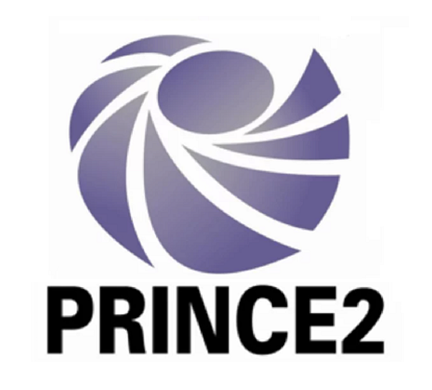
PRINCE2 in project management
PRINCE2 is a process-oriented PM method, can be scaled and places the benefits of a project at the center of project management. Our specialist article provides an introduction to the basic idea, strengths and weaknesses of the PRINCE2 method.
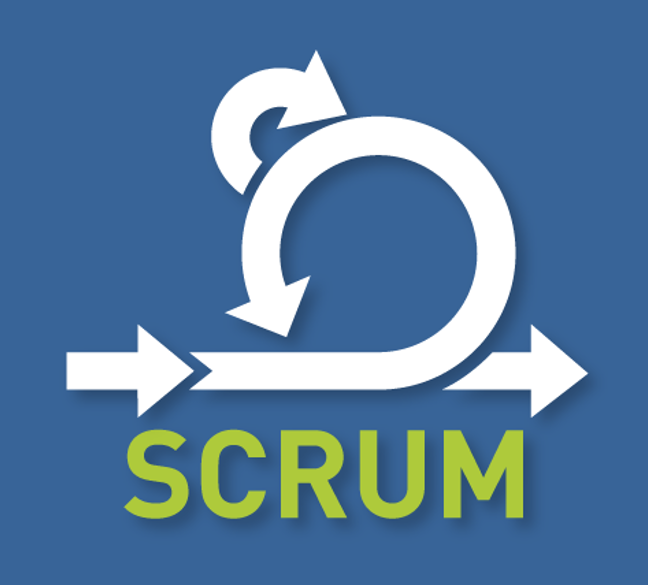
Scrum in software development
When it comes to agile software development methods, there is one term you cannot avoid: Scrum. But what exactly is Scrum and how does it develop its strengths in software development?

Project communication
One of the main reasons for project failure is a lack of project communication - according to a PMI study, communication management in a project is just as important as an accurate cost estimate, a clear definition of project goals and a thorough risk analysis. 3 practical tips for your project communication!
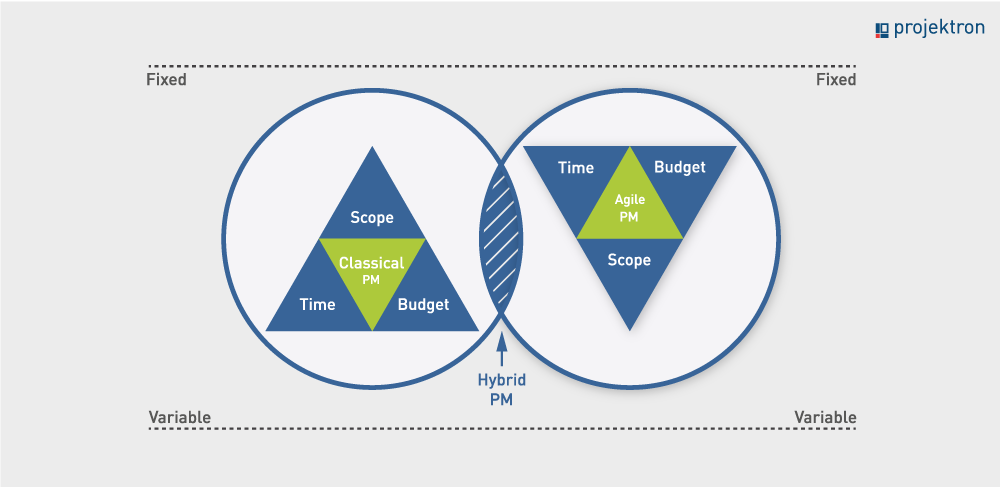
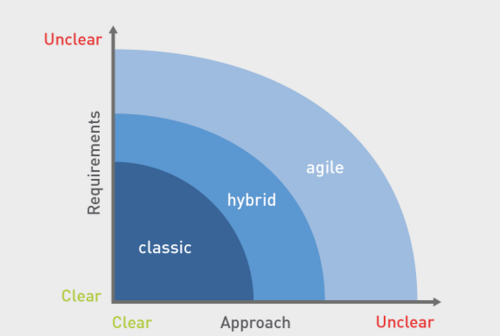
![[Translate to Englisch:] In diesem hybriden Projektplan nach V-Scrum erfolgt die Grobplanung in klassischen Projektphasen, die Implementierungsphase allerdings in iterativen Prozessen. [Translate to Englisch:] Hybrides Projektmanagement, Beispiel V-Scrum-Zeitplan in Projektron BCS.](/fileadmin/_processed_/4/f/csm_hybrides-projektmanagement-vscrum_91d28ec76a.png)
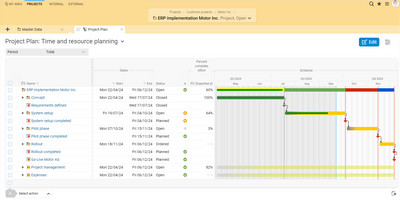
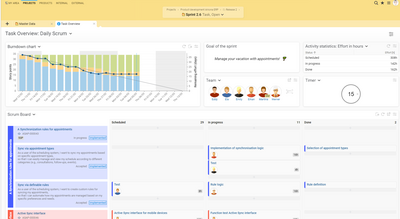
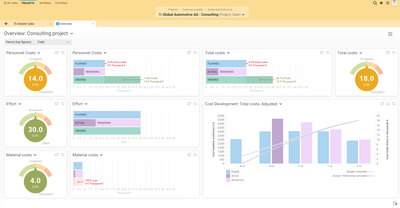
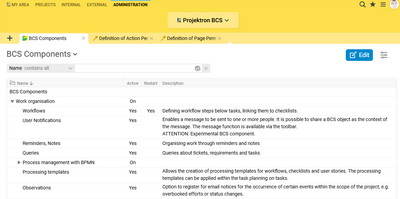
![[Translate to Englisch:] Hybrides Projektmanagement vereint klassisch und agil. [Translate to Englisch:] Hybrides Projektmanagement aus klassisch und agil für mehr Effektivität](/fileadmin/user_upload/1_bilder_website/blog/fachartikel/2021/Hybrides_PM/210927_Hybrides-Projektmanagement_Teaser.png)









